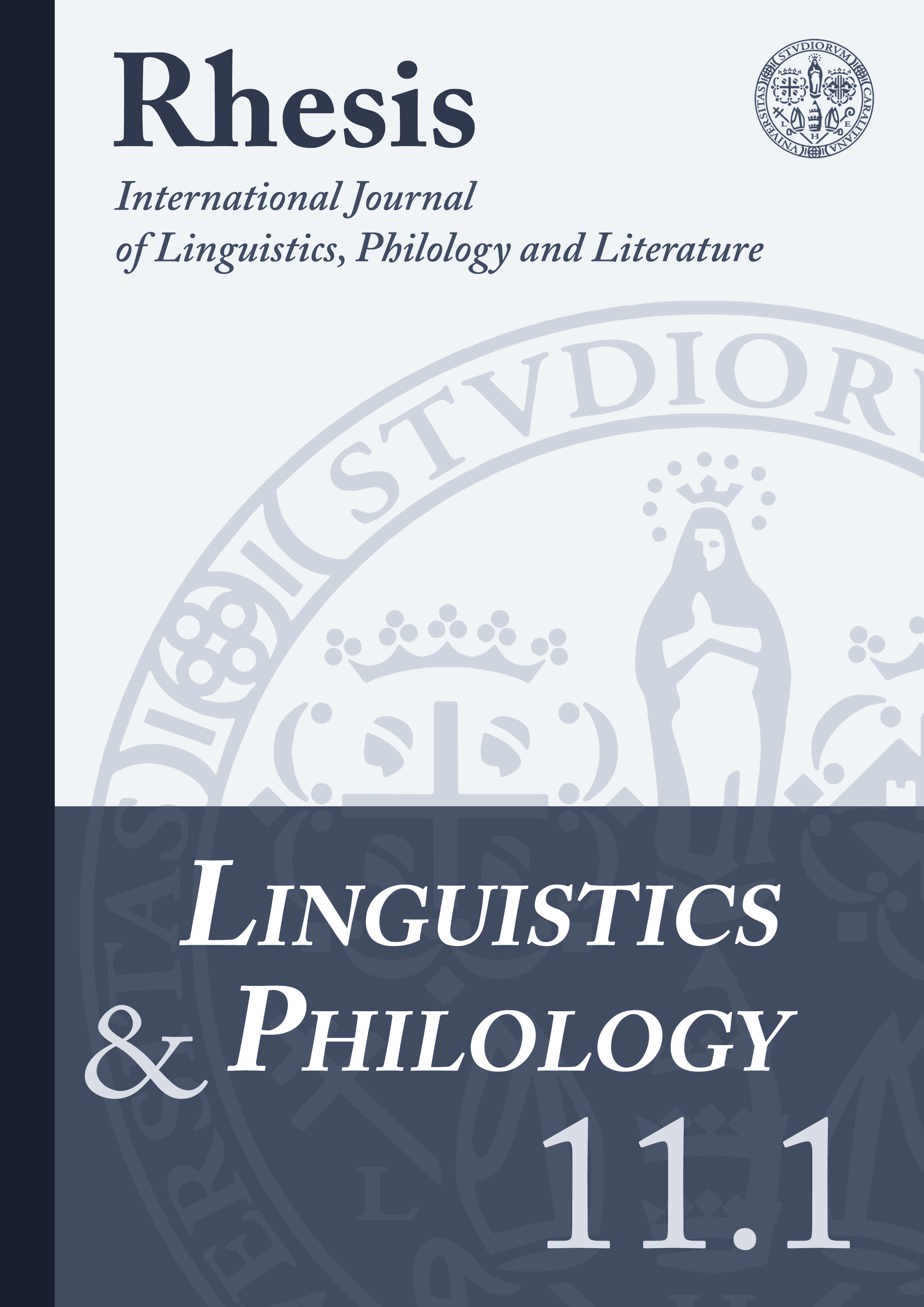Καθαρὸς κατὰ τὸν νόµον. Il µίασµα nelle leggi draconiane sull’omicidio tra V e IV secolo a.C.
Abstract
It should not be surprising to see the relationship between the irrational idea of µίασµα and the law of homicide: Attic law was the product of the synergy between law and the sacred. For this reason, at least until the beginning of the classical age, one cannot speak of the manipulation of a belief but, at most, of its use in relation to a specific perception of the crime. The aim of this contribution is to show that in the fourth century, a total overlap was reached between the principle of µίασµα and the system of guilt and punishment: the ‘impure’ µιαρός is only the murderer who committed the crime in circumstances not covered by the law; in all other cases, the misdoer retains the condition of purity (καθαρός). Considering that cases of ‘justified homicide’ φόνος δίκαιος are often closely linked to the urgency of saving the city, preserving it from all those situations that could undermine its balance, in this perspective the µίασµα could be understood as a functional element for this purpose, a manipulated concept for coercive and social purposes.
Downloads
References
Bearzot, Cinzia S. (2007), ‘Diritto e retorica nella democrazia ateniese’, Etica & Politica 9 (1), 113-134.
Bendlin, Andreas (2007), ‘Purity and Pollution’, in Ogden, Daniel (ed.), A Companion to Greek Religion, Hoboken, Wiley-Blackwell, 178-189.
Biscardi, Arnaldo (1982), Diritto greco antico, Varese, Giuffrè.
Boegehold, Alan L. (1995), The Lawcourts at Athens: Sites, Buildings, Equipment, Procedure, and Testimonia, Princeton, The American School of Classical Studies at Athens.
Burkert, Walter F. M. (2003), La religione greca di epoca arcaica e classica, Milano, Jaka Book (Griechische Religion der archaischen und klassischen Epoche, Stuttgart, Verlag W. Kohlhammer, 1977).
Canevaro, Mirko (2016), Demostene. Contro Leptine, Berlin-Boston, de Gruyter.
Canevaro, Mirko; Harris, Edward M. (2012), ‘The Documents in Andocides’ On the Mysteries’, The Classical Quarterly 62, 98-129.
Cantarella, Eva (1976), Studi sull’omicidio in diritto greco e romano, Milano, Giuffrè.
Cossu, Tatiana (2017), ‘Discorsi sul puro e l’impuro: approcci antropologici per lo studio del mondo antico’, OTIVM 2, 1-18.
Cusumano, Nicola (2012), ‘Purificare e salvare la polis’, in Cataldi, Silvio; Bianco, Elisabetta;
Cuniberti, Gianluca (eds.), Salvare le poleis, costruire la concordia, progettare la pace, Alessandria, Edizioni dell’Orso, 419-430.
Dodds, Eric R. (2009), I Greci e l’irrazionale, Milano, BUR (The Greeks and the Irrational, Berkeley-Los Angeles, University of California Press, 1951).
Douglas, Mary (1993), Purezza e pericolo. Un’analisi dei concetti di contaminazione e tabù, Bologna, Il Mulino (Purity and Danger. An Analysis of the Concepts of Pollution and Taboo, London-New York, Routledge, 1966).
Ferrari, Franco; Poli, Silvia (2005), Platone. Le leggi, Milano, BUR.
Gagarin, Michael (1978), ‘The Prohibition of Just and Unjust Homicide in Antiphon’s Tetralogies’, Greek, Roman, and Byzantine Studies 19, 291-306.
Giordano, Manuela (2014), ‘Contamination et vengeance: pour une diachronie du miasma’, Mètis 12, 291-310.
Gunther, Martin (2009), Divine Talk: Religious Argumentation in Demosthenes, Oxford, Oxford University Press.
Harris, Edward M. (2014), ‘The Authenticity of the Document at Andocides On the Mysteries 95-98’, Tekmeria 12, 121-153.
Harris, Edward M. (2015), ‘The Family, the Community, and Murder: The Role of Pollution in Athenian Homicide Law’, in Ando, Clifford; Rüpke, Jörg (eds.), Public and Private in Ancient Mediterranean Law and Religion, Berlin, de Gruyter, 11-35.
Hewitt, Joseph W. (1910), ‘The Necessity of Ritual Purification after Justifiable Homicide’, Transactions and Proceedings of the American Philological Association 41, 99-113.
Kajava, Mika (2017), ‘Purificare l’impuro nel mondo greco: come, quando, perché’, OTIVM 2, 1-14.
Kapparis, Konstantinos A. (2002), Abortion in the Ancient World, London, Duckworth.
Lippolis, Enzo (2017), ‘Puro e impuro nel mondo antico: lo stato dell’arte’, OTIVM 3, 1-31.
Loddo, Laura (2013), ‘I Greci e l’aborto fra teoria politica e prassi medica. Per una rilettura di Platone, Aristotele, Ippocrate’, Erga Logoi 2, 105-133.
Marzi, Mario; Feraboli, Simonetta (1995), Oratori Attici minori: Antifonte, Andocide, Dinarco, Demade, Torino, UTET.
Meinel, Fabian (2015), Pollution and Crisis in Greek Tragedy, Cambridge, Cambridge University Press.
Mouliner, Louis (1952), Le pur et l’impur dans la pensée des Grecs d’Homère à Aristote, Paris, Klincksieck.
Paoli, Ugo E. (1976a), ‘Le fonti del diritto attico’, in Paoli, Ugo E., Altri Studi di diritto greco e romano, Milano, Istituto editoriale cisalpino-La Goliardica, 1-18.
Paoli, Ugo E. (1976b), ‘Le développement de la polis athénienne’, in Paoli, Ugo E., Altri Studi di diritto greco e romano, Milano, Istituto editoriale cisalpino-La Goliardica, 179-185.
Parker, Robert (1983), Miasma, Oxford, Clarendon Press.
Pepe, Laura (2012), Phonos. L’omicidio da Draconte all’età degli oratori, Milano, Giuffrè.
Pepe, Laura (2013), ‘Abortion in Ancient Greece’, in Gagarin, Michael; Lanni, Adriaan (eds.), Symposion 2013. Papers on Greek and Hellenistic Legal History (Cambridge MA, August 26-29, 2013), Wien, Verlag der Österreichischen Akademie der Wissenshaften, 39-63.
Poddighe, Elisabetta (2014), Aristotele, Atene e le metamorfosi dell’idea democratica. Da Solone a Pericle (594-451 a.C.), Roma, Carocci.
Salvo, Irene (2017), ‘Nel nome di Apollo e di Artemide: sangue, miasma, e trasmissione del sapere rituale nella Grecia Antica’, OTIVM 2, 1-15.
Sarini, Ilaria (1992), Demostene. Orazioni, Milano, BUR.
Saunders, Trevor J. (1991), Plato’s Penal Code. Tradition, Controversy, and Reform in Greek Penology, Oxford, Clarendon Paperbacks.
Scandellari, Simonetta (1979), ‘Osservazioni sul significato del termine aitia nelle Tetralogie di Antifonte’, Sandalion 2, 67-80.
Sealey, Raphael (1983), ‘The Athenian Courts for Homicide’, Classical Philology 78, 275-296.
Sealey, Raphael (1984), ‘The Tetralogies Ascribed to Antiphon’, Transactions of the American Philological Association 114, 71-85.
Stolfi, Emanuele (2006), Introduzione allo studio dei diritti greci, Torino, Giappichelli.
Stolfi, Emanuele (2019), ‘Prime note su phonos e miasma nella tragedia greca: il kerygma di Edipo e le sue ambigue allusioni’, in Gagliardi, Lorenzo (ed.), Dike. Essays on Greek Law in Honor of Alberto Maffi, Milano, Giuffrè, 291-314.
Todd, Stephen C. (2015), ‘Death and Religion in Athenian Law: Identifying Pollution?’, in Thür, Gerhard; Leão, Delfim F. (Hrsgg.), Symposion 2015. Vorträge zur griechischen und hellenistischen Rechtsgeschichte, Wien, Verlag der Österreichischen Akademie der Wissenschaften, 325-350.



